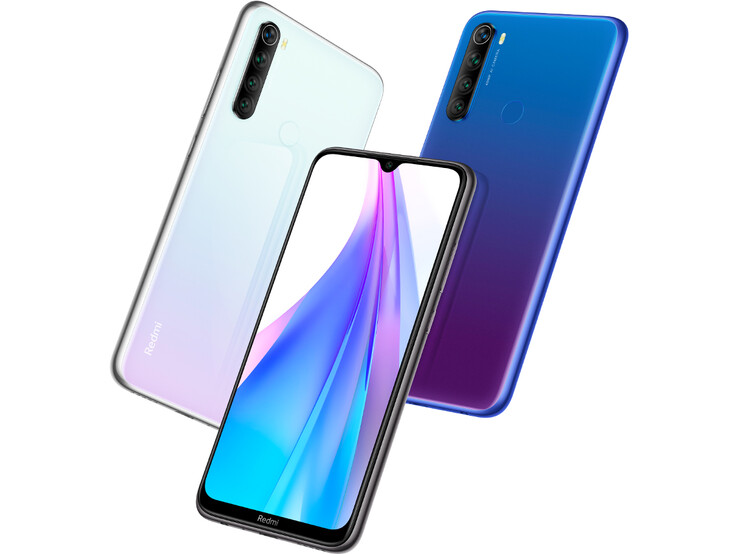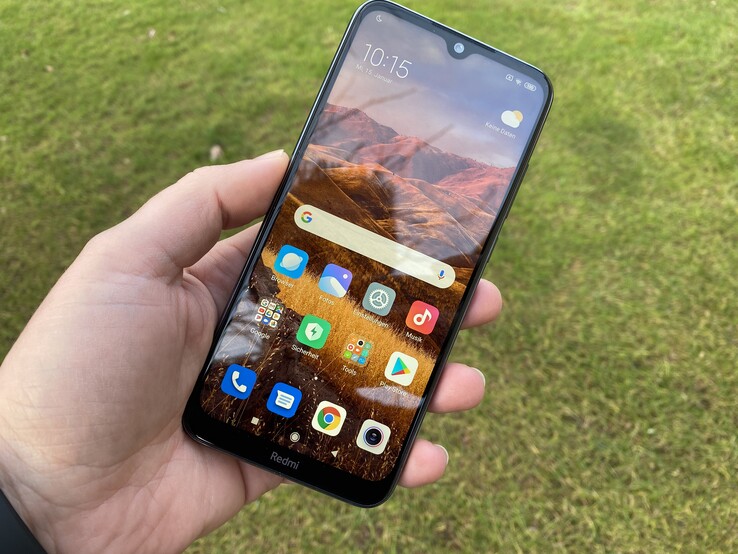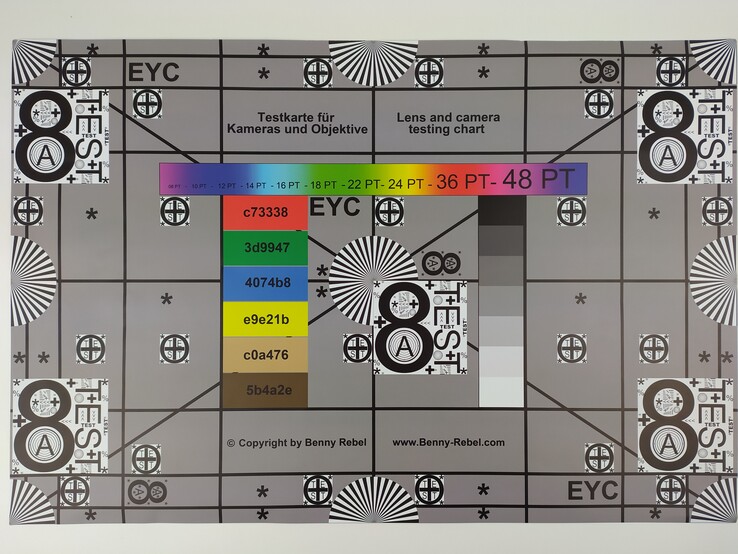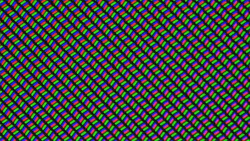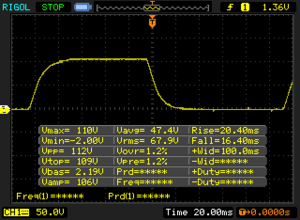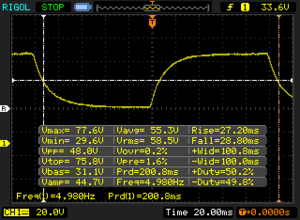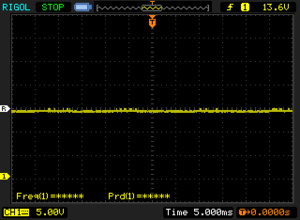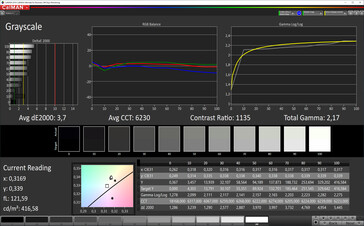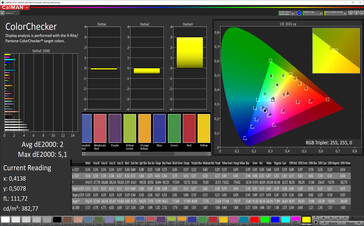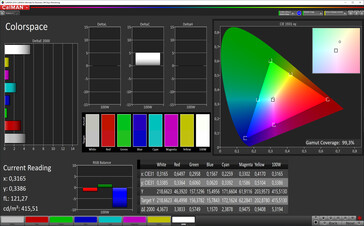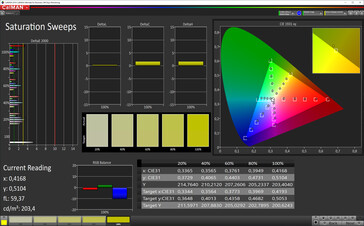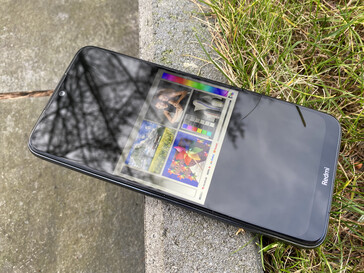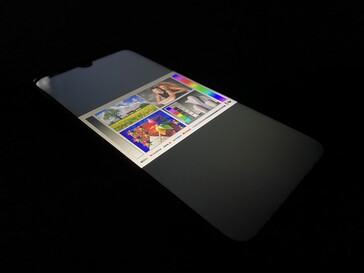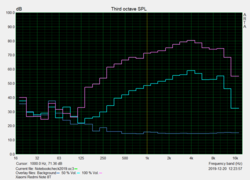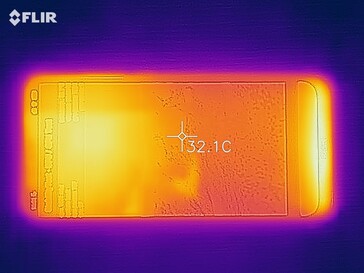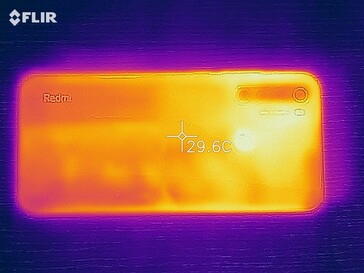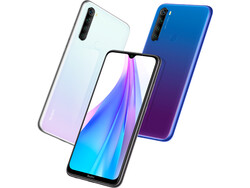Xiaomi Redmi Note 8T Review - Smartphone with the small difference
Comparison Devices
Bewertung | Rating Version | Datum | Modell | Gewicht | Laufwerk | Groesse | Aufloesung | Preis ab |
|---|---|---|---|---|---|---|---|---|
| 79.3 % v7 (old) | v7 (old) | 01 / 2020 | Xiaomi Redmi Note 8T SD 665, Adreno 610 | 200 g | 64 GB eMMC Flash | 6.30" | 2340x1080 | |
| 80.2 % v7 (old) | v7 (old) | 01 / 2020 | TCL Plex SD 675, Adreno 612 | 192 g | 128 GB UFS 2.0 Flash | 6.53" | 2340x1080 | |
| 78.4 % v7 (old) | v7 (old) | 11 / 2019 | Motorola Moto G8 Plus SD 665, Adreno 610 | 188 g | 64 GB eMMC Flash | 6.30" | 2280x1080 | |
| 79.8 % v7 (old) | v7 (old) | 04 / 2019 | Samsung Galaxy A50 Exynos 9610, Mali-G72 MP3 | 166 g | 128 GB UFS 2.1 Flash | 6.40" | 2340x1080 |
Case, Equipment and Operation
The Xiaomi Redmi Note 8T is almost identical in construction to its sister model Redmi Note 8, the latter being the Asian model and our tester is the one for the Western market. The two smartphones are very similar and for more information, please read the Redmi Note 8 review.
The workmanship of the smartphone is on a good level. The metal frame gives the Note 8T a high value, only the rather thick plastic bezel dims this impression a bit. The phone is optionally available in the sonorous colors Moonshadow Grey, Starscape Blue, as well as Moonlight White.
Besides the Global ROM with the current MiUI 11 based on Android 9.0 Pie, there is also a wide language support. Unlike the Chinese version of the Redmi smartphone, DRM Widevine-L1 is also supported, so that correspondingly protected content can be consumed in full quality.
There are no major changes in the communication modules, only LTE has a slightly wider band support and there is an NFC chip in the Xiaomi phone. It is also interesting to note that the SAR values are higher for the note 8T (0.74/1.30 W/kg) than for the sister model (0.191/1.089 W/kg). This will be due less to actually different radiation levels, but rather to different regional measurement standards.
The rest of the equipment is quite complete. Besides an audio jack, there is also an infrared transmitter which can be used to control the home entertainment electronics. A VHF receiver is also installed. The card slot accepts two Nano-SIM and one microSD card.
| Networking | |
| iperf3 transmit AX12 | |
| TCL Plex | |
| Xiaomi Redmi Note 8T | |
| Samsung Galaxy A50 | |
| Motorola Moto G8 Plus | |
| iperf3 receive AX12 | |
| TCL Plex | |
| Xiaomi Redmi Note 8T | |
| Samsung Galaxy A50 | |
| Motorola Moto G8 Plus | |
Cameras - Redmi Note 8T with Quad Camera
The 13-MP camera on the front uses a highly visible blur from the factory. However, the settings can be adjusted including face width and eye size or even deactivated completely. The quality of the picture is decent and well suited for social networking.
The quad-camera on the back does not offer an optical zoom, but uses the high resolution of the image sensor for a double digital zoom. The photos usually succeed quite pleasingly, but in comparison to the competition they lack a bit of sharpness. It is also a pity that the night mode is only available for the main lens.
Videos are at best recorded in Ultra HD with 30 FPS. Unfortunately, it's not possible to change the lens during recording.
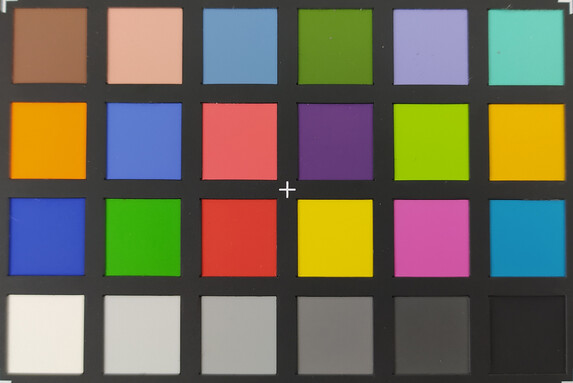
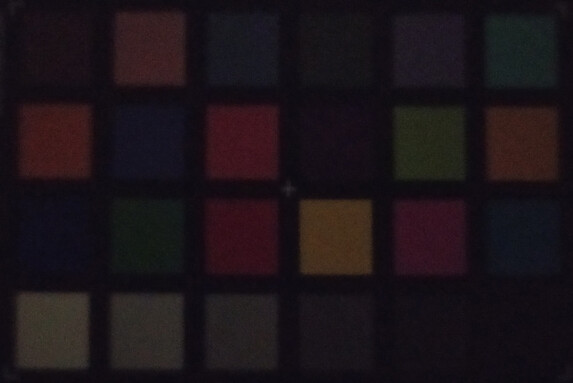
Display - Powerful IPS Panel in the Redmi Smartphone
The 6.3-inch IPS display of the Redmi Note 8T not only offers high sharpness, but can also score with its high luminosity. The black movement is slightly increased, but the contrast is still very decent. The most positive thing is that Xiaomi does without PWM.
The CalMAN analysis also shows a good color display for this price range, which can be additionally adjusted in the settings. Merely the reaction times are a bit slow.
| |||||||||||||||||||||||||
Brightness Distribution: 93 %
Center on Battery: 628 cd/m²
Contrast: 1163:1 (Black: 0.54 cd/m²)
ΔE ColorChecker Calman: 2 | ∀{0.5-29.43 Ø4.82}
ΔE Greyscale Calman: 3.7 | ∀{0.09-98 Ø5.1}
99.3% sRGB (Calman 2D)
Gamma: 2.17
CCT: 6230 K
| Xiaomi Redmi Note 8T IPS, 2340x1080, 6.3" | TCL Plex IPS, 2340x1080, 6.5" | Motorola Moto G8 Plus IPS, 2280x1080, 6.3" | Samsung Galaxy A50 AMOLED, 2340x1080, 6.4" | |
|---|---|---|---|---|
| Response Times | 11% | 36% | 85% | |
| Response Time Grey 50% / Grey 80% * | 56 ? | 56 ? -0% | 36 ? 36% | 8 ? 86% |
| Response Time Black / White * | 36.8 ? | 29.2 ? 21% | 24 ? 35% | 6 ? 84% |
| PWM Frequency | 2358 ? | 463 ? | 119 | |
| Screen | -19% | -42% | -13% | |
| Brightness middle | 628 | 432 -31% | 597 -5% | 644 3% |
| Brightness | 631 | 418 -34% | 596 -6% | 628 0% |
| Brightness Distribution | 93 | 93 0% | 93 0% | 91 -2% |
| Black Level * | 0.54 | 0.43 20% | 0.52 4% | |
| Contrast | 1163 | 1005 -14% | 1148 -1% | |
| Colorchecker dE 2000 * | 2 | 3.4 -70% | 5.93 -197% | 2.64 -32% |
| Colorchecker dE 2000 max. * | 5.1 | 6 -18% | 9.42 -85% | 9.23 -81% |
| Greyscale dE 2000 * | 3.7 | 3.8 -3% | 5.3 -43% | 2.5 32% |
| Gamma | 2.17 101% | 2.14 103% | 2.232 99% | 2.024 109% |
| CCT | 6230 104% | 6151 106% | 7632 85% | 6649 98% |
| Total Average (Program / Settings) | -4% /
-13% | -3% /
-26% | 36% /
11% |
* ... smaller is better
Display Response Times
| ↔ Response Time Black to White | ||
|---|---|---|
| 36.8 ms ... rise ↗ and fall ↘ combined | ↗ 20.4 ms rise | |
| ↘ 16.4 ms fall | ||
| The screen shows slow response rates in our tests and will be unsatisfactory for gamers. In comparison, all tested devices range from 0.1 (minimum) to 240 (maximum) ms. » 95 % of all devices are better. This means that the measured response time is worse than the average of all tested devices (20.5 ms). | ||
| ↔ Response Time 50% Grey to 80% Grey | ||
| 56 ms ... rise ↗ and fall ↘ combined | ↗ 27.2 ms rise | |
| ↘ 28.8 ms fall | ||
| The screen shows slow response rates in our tests and will be unsatisfactory for gamers. In comparison, all tested devices range from 0.165 (minimum) to 636 (maximum) ms. » 92 % of all devices are better. This means that the measured response time is worse than the average of all tested devices (32 ms). | ||
Screen Flickering / PWM (Pulse-Width Modulation)
| Screen flickering / PWM not detected | |||
In comparison: 53 % of all tested devices do not use PWM to dim the display. If PWM was detected, an average of 8323 (minimum: 5 - maximum: 343500) Hz was measured. | |||
Performance, Emissions and Battery Life
The system performance of the Redmi Note 8T is on a good level and apps start quite fast. There are only minor restrictions for ambitious gamers, although most titles can be played smoothly on the smartphone, but you have to make do with reduced details in demanding games and even then you might experience some minor jerkiness. However, the surface temperatures always remain low and the note 8T doesn't even get hand-warm under load.
The loudspeaker on the bottom edge delivers a solid performance, but is quite high loaded and sometimes creaks in our test device. Alternatively, the sound can be output via the jack port as well as USB. Bluetooth is available wirelessly.
The note 8T delivers good runtimes with its 4.000 mAh battery, even if these are somewhat below those of its sister model.
| PCMark for Android | |
| Work performance score (sort by value) | |
| Motorola Moto G8 Plus | |
| Samsung Galaxy A50 | |
| Average Qualcomm Snapdragon 665 (7437 - 9051, n=10) | |
| Work 2.0 performance score (sort by value) | |
| Xiaomi Redmi Note 8T | |
| TCL Plex | |
| Motorola Moto G8 Plus | |
| Samsung Galaxy A50 | |
| Average Qualcomm Snapdragon 665 (6189 - 11432, n=12) | |
| GFXBench | |
| on screen Aztec Ruins Normal Tier Onscreen (sort by value) | |
| Xiaomi Redmi Note 8T | |
| TCL Plex | |
| Motorola Moto G8 Plus | |
| Samsung Galaxy A50 | |
| Average Qualcomm Snapdragon 665 (6.2 - 15, n=12) | |
| Average of class Smartphone (6.2 - 166, n=200, last 2 years) | |
| 1920x1080 Aztec Ruins Normal Tier Offscreen (sort by value) | |
| Xiaomi Redmi Note 8T | |
| TCL Plex | |
| Motorola Moto G8 Plus | |
| Samsung Galaxy A50 | |
| Average Qualcomm Snapdragon 665 (7.8 - 8.4, n=12) | |
| Average of class Smartphone (3.4 - 332, n=200, last 2 years) | |
| on screen Aztec Ruins High Tier Onscreen (sort by value) | |
| Xiaomi Redmi Note 8T | |
| TCL Plex | |
| Motorola Moto G8 Plus | |
| Samsung Galaxy A50 | |
| Average Qualcomm Snapdragon 665 (3.9 - 9.1, n=12) | |
| Average of class Smartphone (0.85 - 144, n=201, last 2 years) | |
| 2560x1440 Aztec Ruins High Tier Offscreen (sort by value) | |
| Xiaomi Redmi Note 8T | |
| TCL Plex | |
| Motorola Moto G8 Plus | |
| Samsung Galaxy A50 | |
| Average Qualcomm Snapdragon 665 (2.7 - 2.8, n=12) | |
| Average of class Smartphone (1.2 - 129, n=200, last 2 years) | |
| Xiaomi Redmi Note 8T | TCL Plex | Motorola Moto G8 Plus | Samsung Galaxy A50 | Average 64 GB eMMC Flash | Average of class Smartphone | |
|---|---|---|---|---|---|---|
| AndroBench 3-5 | 30% | 4% | 3% | -15% | 507% | |
| Sequential Read 256KB | 315.8 | 522 65% | 302.5 -4% | 507 61% | 274 ? -13% | 2189 ? 593% |
| Sequential Write 256KB | 173.9 | 199.7 15% | 217.4 25% | 192.1 10% | 177.3 ? 2% | 1797 ? 933% |
| Random Read 4KB | 90.4 | 130.8 45% | 59.9 -34% | 98.9 9% | 59.9 ? -34% | 295 ? 226% |
| Random Write 4KB | 91.2 | 130.1 43% | 124.9 37% | 18.2 -80% | 32.7 ? -64% | 342 ? 275% |
| Sequential Read 256KB SDCard | 71.6 ? | 74.9 ? 5% | 72.6 ? 1% | 73.9 ? 3% | 77.4 ? 8% | |
| Sequential Write 256KB SDCard | 52.8 ? | 56.2 ? 6% | 52.2 ? -1% | 60.7 ? 15% | 58.3 ? 10% |
Temperature
(+) The maximum temperature on the upper side is 32.8 °C / 91 F, compared to the average of 35.2 °C / 95 F, ranging from 21.9 to 247 °C for the class Smartphone.
(+) The bottom heats up to a maximum of 33.3 °C / 92 F, compared to the average of 33.9 °C / 93 F
(+) In idle usage, the average temperature for the upper side is 28 °C / 82 F, compared to the device average of 32.9 °C / 91 F.
Speakers
Xiaomi Redmi Note 8T audio analysis
(+) | speakers can play relatively loud (87.9 dB)
Bass 100 - 315 Hz
(-) | nearly no bass - on average 25.6% lower than median
(±) | linearity of bass is average (11.3% delta to prev. frequency)
Mids 400 - 2000 Hz
(+) | balanced mids - only 3.2% away from median
(+) | mids are linear (3.4% delta to prev. frequency)
Highs 2 - 16 kHz
(±) | higher highs - on average 6.3% higher than median
(+) | highs are linear (3.1% delta to prev. frequency)
Overall 100 - 16.000 Hz
(±) | linearity of overall sound is average (18.6% difference to median)
Compared to same class
» 19% of all tested devices in this class were better, 9% similar, 71% worse
» The best had a delta of 12%, average was 36%, worst was 134%
Compared to all devices tested
» 40% of all tested devices were better, 8% similar, 52% worse
» The best had a delta of 4%, average was 24%, worst was 134%
Samsung Galaxy A50 audio analysis
(+) | speakers can play relatively loud (85 dB)
Bass 100 - 315 Hz
(-) | nearly no bass - on average 73.9% lower than median
(+) | bass is linear (0% delta to prev. frequency)
Mids 400 - 2000 Hz
(-) | nearly no mids - on average 73.9% lower than median
(+) | mids are linear (0% delta to prev. frequency)
Highs 2 - 16 kHz
(-) | nearly no highs - on average 73.9% lower than median
(+) | highs are linear (0% delta to prev. frequency)
Overall 100 - 16.000 Hz
(-) | overall sound is not linear (119.9% difference to median)
Compared to same class
» 88% of all tested devices in this class were better, 9% similar, 3% worse
» The best had a delta of 12%, average was 36%, worst was 134%
Compared to all devices tested
» 96% of all tested devices were better, 3% similar, 1% worse
» The best had a delta of 4%, average was 24%, worst was 134%
Battery Life
| Xiaomi Redmi Note 8T 4000 mAh | TCL Plex 3820 mAh | Motorola Moto G8 Plus 4000 mAh | Samsung Galaxy A50 4000 mAh | Average of class Smartphone | |
|---|---|---|---|---|---|
| Battery Runtime | |||||
| WiFi Websurfing | 764 | 616 -19% | 980 28% | 701 -8% | 1090 ? 43% |
Pros
Cons
Verdict - Redmi Note 8T Shows Only Few Weaknesses
With the Redmi Note 8T, Xiaomi offers a smartphone that is already available for well under 200 euros. The customer gets quite a lot for that. Especially the display is convincing in the test with a good color representation and a broadly adjustable luminance. The integrated SoC also offers plenty of computing power.
The nominal quad camera takes decent pictures, but the macro and bokeh lens are more show than really being of noticeable use. Given the price, however, this is grumbling at a high level.
With the Redmi Note 8T, Xiaomi puts together a modern smartphone package at an attractive price-performance ratio.
The fully-fledged dual SIM support and the possibility to additionally expand the memory with microSD should also be positively emphasized. If that's not enough, you can also fall back on a version with 6/128 GB memory, and if you want to save a few more euros, you can go for the version with 3/32 GB.
Why Xiaomi only uses Bluetooth 4.2 in the Note 8T remains a mystery forever, with no noticeable limitations. With LTE band 20, DRM certification and NFC, the smartphone is also freed from the restrictions of the Chinese version compared to its sister model.
Xiaomi Redmi Note 8T
- 01/21/2020 v7 (old)
Daniel Schmidt




